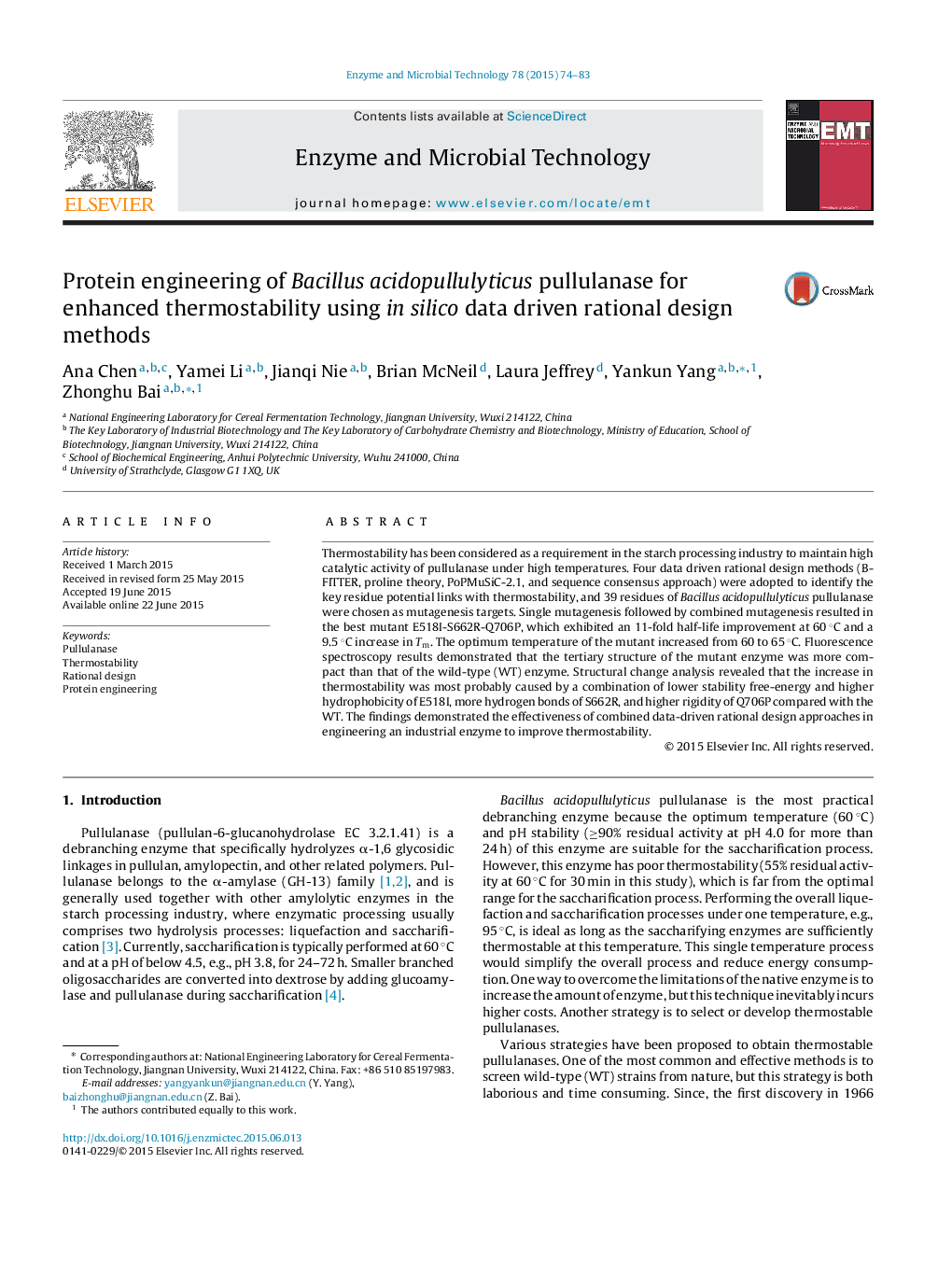| Article ID | Journal | Published Year | Pages | File Type |
|---|---|---|---|---|
| 16851 | Enzyme and Microbial Technology | 2015 | 10 Pages |
•Four data driven rational design methods were adopted to identify the key residues.•The best mutant exhibits an 11-fold improvement in half-life at 60 °C.•Combining rational design methods is an efficient way to improve thermostability.
Thermostability has been considered as a requirement in the starch processing industry to maintain high catalytic activity of pullulanase under high temperatures. Four data driven rational design methods (B-FITTER, proline theory, PoPMuSiC-2.1, and sequence consensus approach) were adopted to identify the key residue potential links with thermostability, and 39 residues of Bacillus acidopullulyticus pullulanase were chosen as mutagenesis targets. Single mutagenesis followed by combined mutagenesis resulted in the best mutant E518I-S662R-Q706P, which exhibited an 11-fold half-life improvement at 60 °C and a 9.5 °C increase in Tm. The optimum temperature of the mutant increased from 60 to 65 °C. Fluorescence spectroscopy results demonstrated that the tertiary structure of the mutant enzyme was more compact than that of the wild-type (WT) enzyme. Structural change analysis revealed that the increase in thermostability was most probably caused by a combination of lower stability free-energy and higher hydrophobicity of E518I, more hydrogen bonds of S662R, and higher rigidity of Q706P compared with the WT. The findings demonstrated the effectiveness of combined data-driven rational design approaches in engineering an industrial enzyme to improve thermostability.
